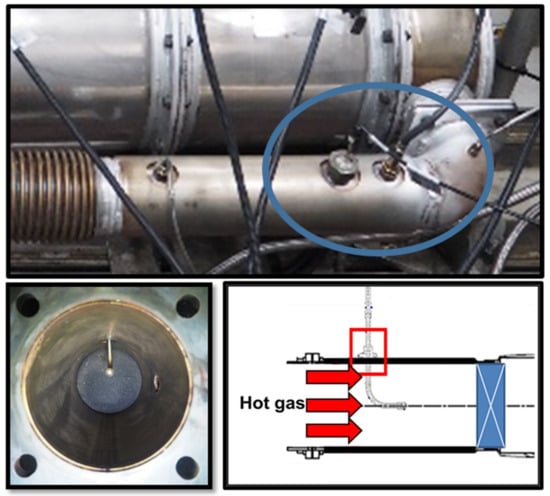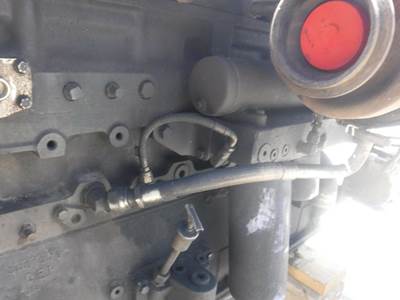6.7 Cummins Exhaust Gas Temp Sensor Location: Expert Tips
The exhaust gas temperature sensor on a 6.7 Cummins engine is typically located around the turbocharger, either before or after it. Sometimes, the sensor is placed just before the DPF (particulate filter) for accurate temperature readings during regeneration phases.
The exhaust gas temperature sensor plays a crucial role in monitoring and optimizing the performance of a 6. 7 Cummins engine. By accurately measuring the temperature of the exhaust gases, this sensor ensures that the engine operates efficiently and avoids any potential issues related to excessive heat.
We will explore the precise location of the exhaust gas temperature sensor on a 6. 7 Cummins engine and discuss its importance in maintaining optimal engine performance.
Understanding The Exhaust Gas Temperature Sensor
The exhaust gas temperature sensor for the 6. 7 Cummins is typically located near the turbocharger, either before or after it, and sometimes just before the DPF. This location allows for accurate temperature readings, optimizing the regeneration phases. Symptoms of a faulty sensor may include warning lights for the glow plug system and particulate filter, along with increased exhaust emissions and poor driving behavior.
| Understanding the Exhaust Gas Temperature Sensor | |
| What is the exhaust gas temperature sensor? | The exhaust gas temperature sensor is a component that measures the temperature of the exhaust gases in a vehicle’s exhaust system. It helps monitor the performance of the engine and the efficiency of the combustion process. |
| Importance of the exhaust gas temperature sensor | The exhaust gas temperature sensor plays a crucial role in ensuring optimal engine performance and emissions control. It provides valuable data to the engine control unit (ECU) for calculating fuel injection timing and controlling the regeneration of the particulate filter. By accurately measuring the exhaust gas temperature, the sensor helps prevent engine damage and excessive emissions. |
| How does the sensor work? | The exhaust gas temperature sensor uses a temperature-sensitive element, usually a thermocouple or a resistive temperature device (RTD), to detect the temperature of the exhaust gases. It converts the temperature into an electrical signal that is sent to the ECU for interpretation. The ECU then uses this information to make adjustments to the fuel injection timing and other engine parameters, ensuring optimal performance and emissions control. |
Location Of The Exhaust Gas Temperature Sensor
The exhaust gas temperature sensor is often located near the turbocharger. It can be situated either before or after the turbocharger, and sometimes, it is placed just before the DPF (Diesel Particulate Filter). The proximity of the sensor to the particulate filter allows for highly accurate temperature readings, optimizing the regeneration phases of the filter.
The exact placement of the exhaust gas temperature sensor may vary depending on the vehicle model and manufacturer. Some sensors may be positioned in the cylinder head next to the thermostat housing, while others are found on the left-hand side of the engine or on the outside of the right-side frame rail.
Importance of sensor proximity to the particulate filter
Having the exhaust gas temperature sensor located near the particulate filter is crucial for detecting any issues or abnormalities with the filter’s regeneration process. A malfunctioning sensor or a sensor that is not in close proximity to the filter can lead to poor driving behavior, increased exhaust emissions, and warning lamps indicating problems with the glow plug system and particulate filter.
Symptoms Of A Faulty Exhaust Gas Temperature Sensor
| Symptoms of a Faulty Exhaust Gas Temperature Sensor |
| Flashing glow plug system warning lamp |
| Illuminated particulate filter warning lamp |
| Engine control lamp activation |
| Increased exhaust emissions |
| Poor driving behavior due to shorter regeneration intervals |
The symptoms of a faulty exhaust gas temperature (EGT) sensor can have several indications. One common symptom is a flashing glow plug system warning lamp, which indicates a problem with the EGT sensor. Another symptom is an illuminated particulate filter warning lamp, which suggests a malfunctioning sensor. Additionally, the engine control lamp activation is another sign of a faulty EGT sensor. Another impact of a faulty sensor is increased exhaust emissions, including CO, NOx, and HC. Furthermore, a problematic EGT sensor can result in poor driving behavior due to shortened regeneration intervals of the particulate filter. Overall, these symptoms emphasize the importance of ensuring the proper functioning of the exhaust gas temperature sensor.
Tips For Locating The Exhaust Gas Temperature Sensor
|
The exhaust gas temperature sensor is often located around the turbocharger. It can be located before or after. Sometimes this sensor takes place just before the DPF. The proximity to the particulate filter allows for very accurate temperature readings, to optimize the regeneration phases. |
|
What are the symptoms of a bad exhaust gas temperature sensor?
|
|
Tried doing some searching online, but couldn’t find out where any of them are located. Does anyone know where these are? There is also an “… |
|
Exhaust gas temperature sensor – Cummins Diesel Forum Cummins EGT locations question | Ram Heavy Duty Forum EGT sensor located HD Rams |

Credit: www.dpfpartsdirect.com
Frequently Asked Questions On 6.7 Cummins Exhaust Gas Temperature Sensor Location
Where Is The Exhaust Gas Temperature Sensor?
The exhaust gas temperature sensor is typically located near the turbocharger, either before or after it. In some cases, it can be found just before the DPF (particulate filter). This positioning allows for accurate temperature readings, optimizing regeneration phases. (42 words)
What Are The Symptoms Of A Bad Exhaust Gas Temperature Sensor?
Symptoms of a bad exhaust gas temperature sensor include flashing glow plug system warning lamp, illuminated particulate filter warning lamp, engine control lamp on, increased exhaust emissions, and poor driving behavior due to shortened regeneration intervals.
Where Is The Temperature Sensor On A 6.7 Cummins?
The temperature sensor on a 6. 7 Cummins can be located around the turbocharger, before or after it. Sometimes, it is placed just before the DPF (Diesel Particulate Filter) for accurate temperature readings during regeneration phases.
Where Is The Exhaust Pressure Sensor On A 6.7 Cummins?
The exhaust pressure sensor on a 6. 7 Cummins is typically located around the turbocharger, either before or after it. In some cases, the sensor may be placed just before the diesel particulate filter (DPF) for accurate temperature readings during regeneration phases.
Conclusion
In order to locate the exhaust gas temperature sensor (EGT) on a 6. 7 Cummins engine, it is often found near the turbocharger, either before or after it. Another possible location is just before the diesel particulate filter (DPF), which allows for precise temperature readings during the regeneration process.
Symptoms of a malfunctioning EGT sensor include flashing glow plug or particulate filter warning lights, increased exhaust emissions, and poor driving behavior. Ensure the EGT sensor is placed in the cylinder head next to the thermostat housing for accurate readings.







